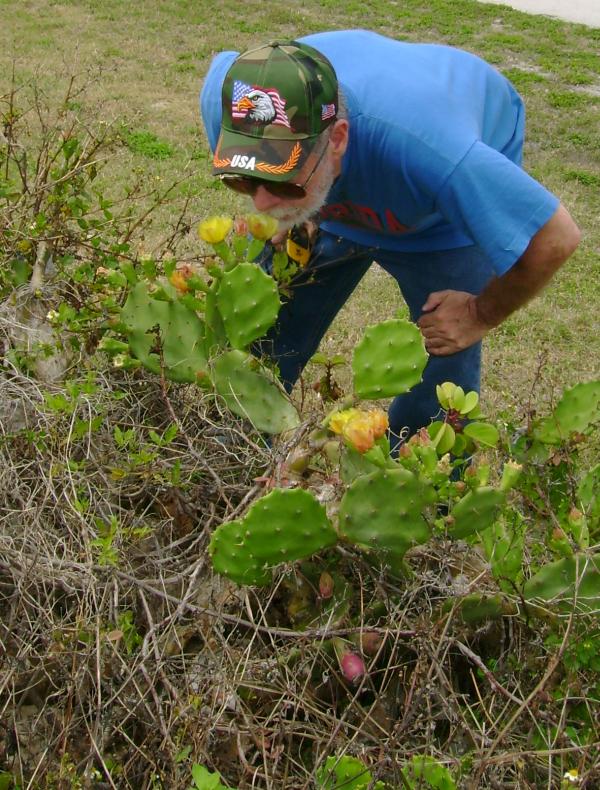NO NIGHT CACHING

"Prickly pear cactus has been a staple of the Mexican and
Central American diet for thousands of years. In parts of the U.S.
it has been gaining popularity as an exotic, gourmet and healthy
addition to one's diet. The prickly pear plant has two different
edible sections: the pad of the cactus (nopal), which can be
treated like a vegetable, and the pear (tuna), which can be treated
like a fruit. They grow wild throughout the American southwest,
down to South America and up to Canada. The ones you may find at a
local store or farmers market will surely originate from a
commercial nopal farm.
# Buy or forage some prickly pear pads.
* Find pads that are bright, green and firm.
* Small, young pads harvested in early spring are thought to be
the most succulent, delicate in flavor, and have the fewest spines.
The tender pads are sometimes sold as "baby nopales".
* If you're harvesting them yourself, wear extremely heavy
gloves or use tongs. Snap the pads off of the plant or cut at the
stem. Cutting at the stem will reduce stress on the pad, and will
allow the cactus to recover more quickly than it would if you
snapped or tore the pad away. This will help keep your cactus plant
healthy for future harvests.
# Remove the spines from the pad by use of a vegetable peeler or
a paring knife.
# Run the pad under cool water. Peel or cut off any
discolorations or bruises on the pad.
# Slice or cut the pads (wipe the knife blade after each slice -
there can be small spines sticking to it), or leave them whole,
depending on what you will be using the nopales for.
# Cook the nopales. They can be either boiled or grilled, as
well as mixed with other ingredients to make unique, satisfying and
healthy dishes."
ARE YOU KIDDIN' ME??d
HOW TO O
IT